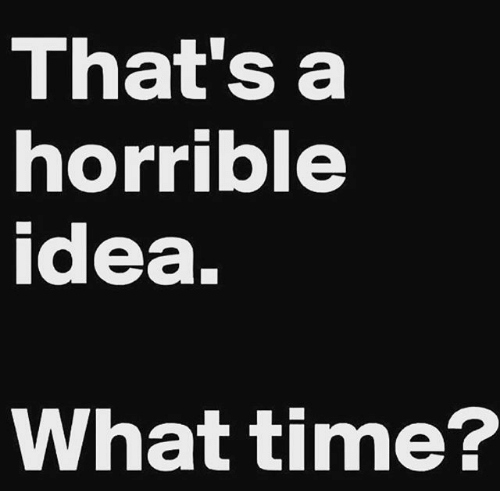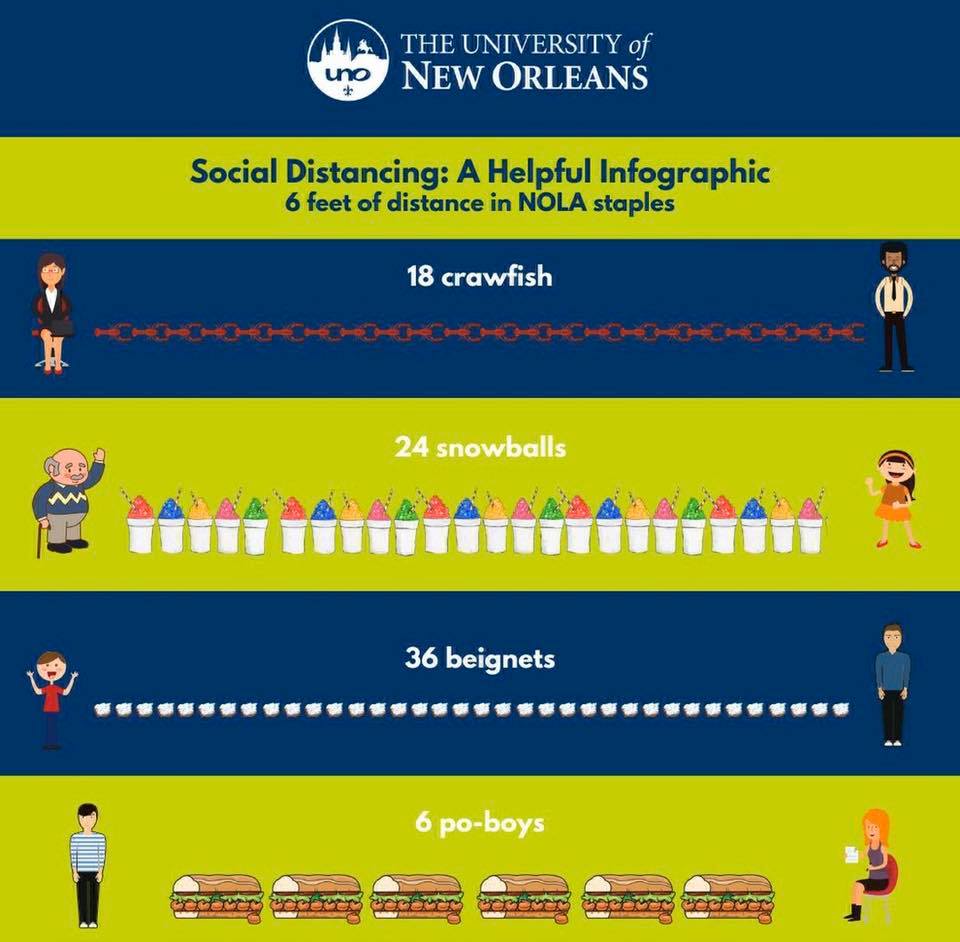
New Orleanians are social, even when it’s around a bad idea.
New Orleanians are not, by nature, virtual people.
Sure, we’ve taken to Zoom gatherings and virtual tip jars and YouTube concerts and online yoga sessions, but as we look toward some kind of “new normal,” I just can’t quite envision a Big Easy technology-dictated, social-distancing life. You can’t deliver Voodoo Fest via small screen, or place taped X standing spots every 6 feet along the Endymion route.
Early into my current five-week quarantine, my book club met via Zoom. “Forget the book,” said the host. “I’d much rather know what’s going on with all of you.”
And there you have it. We are a community that cares about emotions and connections and feelings. Science and academics? Not so much. We touch and hug and chat with strangers in the grocery check-out line. Ever since the city’s earliest days – whether in Congo Square or the Place d’Armes — New Orleanians have spent their leisure time congregating, not isolating.
I know that people elsewhere are feeling the same gravitational pull toward togetherness, but in New Orleans we make it an extreme sport. Think about everything – anything – you might have been doing if this hadn’t happened, and crowds will be involved. French Quarter Fest and Jazz Fest, of course, but also Wednesday night concerts in the square, dance nights on Frenchmen Street, summer’s Running of the Bulls or Red Dress Run. Even Sunday-night family dinners in New Orleans tend to be multi-generational and number in the teens or twenties.

We are a city of romance, an experiential-oriented populace who live for the moment, the event, not the future. That might make for more potholes and fewer Fortune-500 companies, but it also makes for an energy and exuberance to our lifestyle that you just can’t emulate on a couch.
My biggest despair as we squint to see a glimmer of light at the end of this very dark tunnel is that, when it does finally lead to a small exit, there will be nothing but empty pavement at the end. No festivals, no Saints or Pelicans games, no dancing in the streets.
I don’t think New Orleanians can do it. If the Dome is empty on a Saints-on-TV Sunday, the parking lots will fill with tailgaters. If someone starts playing a saxophone on a sidewalk somewhere, a second line will form. It’s just who we are.
I recall the colorless days and empty streets after Hurricane Katrina, when entire neighborhoods stood forlorn and vacant, and people hadn’t yet returned to the city. It was the most desolate landscape imaginable, some kind of post-Apocalyptic scene that lacked any signs of life, in both the literal and figurative sense.
But then came Mardi Gras 2006, and suddenly the streets filled. There were few out-of-towners that first Mardi Gras; the parades were smaller and the crowds thinner. But it was our Mardi Gras, a gathering of locals, residents who used the opportunity to touch and catch up and regain connection and community. It was, and probably always will be, my favorite Mardi Gras ever.
 When this is over, we won’t get that immediate opportunity to celebrate en masse. I know that there will be a time when we can have that kind of Mardi Gras again, but my despair stems from the fear that we may have to wait a year or two to get there. And in the meantime, how will we get through an entire fall (and perhaps winter and spring) with no oom-pah-pah music at Deutsches Haus or first-Saturday gallery strolls on Julia Street or Oscar-contender film shorts at the Prytania? No po-boys on Oak Street or fried chicken in Waldenberg Park? No fall pub crawls or Krewe of Boo parade or caroling in Jackson Square?
When this is over, we won’t get that immediate opportunity to celebrate en masse. I know that there will be a time when we can have that kind of Mardi Gras again, but my despair stems from the fear that we may have to wait a year or two to get there. And in the meantime, how will we get through an entire fall (and perhaps winter and spring) with no oom-pah-pah music at Deutsches Haus or first-Saturday gallery strolls on Julia Street or Oscar-contender film shorts at the Prytania? No po-boys on Oak Street or fried chicken in Waldenberg Park? No fall pub crawls or Krewe of Boo parade or caroling in Jackson Square?
Virtual only gets one so far. After Katrina, I learned to text, because cell towers were out and calls didn’t go through, but texts did. And of course I still use texts. But they don’t substitute for a face to face conversation, and never will.
I’m sure that Zoom and Google Meet will continue to be integral to post-coronavirus life. We might continue to work from home more, watch the latest movies on Netflix, or have our restaurant dinners delivered to our front doors. But, like texting, such substitutions won’t satisfy our social needs. Ellis Marsalis, who died tragically of COVID-19 on April 1, famously said that in other places, culture comes down from on high, but in New Orleans, it bubbles up from the streets. Here, it’s a spring from which we must sip to thrive.
I think that one thing this disaster is teaching all of us is that material things – whether fashionable clothes or cutting-edge electronics or high-end furnishings – don’t matter as much as we once thought they did. As a nation, we are discovering the importance of quality of life, and richness of experiences. It’s a lesson New Orleanians learned long ago.
If there’s one characteristic that New Orleanians exhibit in abundance – besides their exuberance – it’s their creative resilience. We’ve already seen local mobile concerts on bicycles and coronavirus-inspired beers, porch portraits and coronavirus murals. I can envision drive-by stoop nights or weekend balcony parties or driveway fests. Just to tide us over until we can stand shoulder to shoulder as Zulu rolls by, or swing a partner in Lafayette Square.
Meanwhile, we are all learning to know what it truly means to miss New Orleans. The real place, not the virtual one.
 NOLAbeings Multimedia artist Claire Bangser created NOLAbeings as a portrait-based story project that marries...
NOLAbeings Multimedia artist Claire Bangser created NOLAbeings as a portrait-based story project that marries...  Voodoo in New Orleans: Reviving history: New Orleans fortune telling This article takes a deep dive into the history of Voodoo in New Orleans, its hybridization with Catholicism, and its present-day place in the city's culture. The author visits fortune-tellers in the French Quarter, using their guidance as a tool for introspection rather than a deterministic predictor of the future. Through her experiences in New Orleans, the author feels a mystical connection to both the past and the future.
Voodoo in New Orleans: Reviving history: New Orleans fortune telling This article takes a deep dive into the history of Voodoo in New Orleans, its hybridization with Catholicism, and its present-day place in the city's culture. The author visits fortune-tellers in the French Quarter, using their guidance as a tool for introspection rather than a deterministic predictor of the future. Through her experiences in New Orleans, the author feels a mystical connection to both the past and the future. 